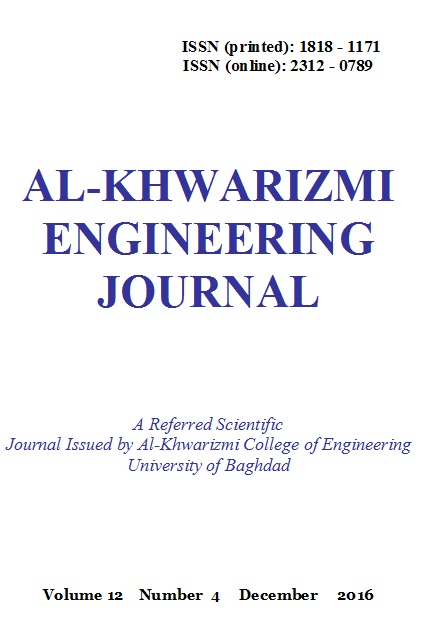Prediction of Surface Roughness and Material Removal Rate in Electrochemical Machining Using Taguchi Method
DOI:
https://doi.org/10.22153/kej.2016.06.001Keywords:
ECM, Carbon, MRR, Ra, Taguchi MethodAbstract
Electrochemical machining is one of the widely used non-conventional machining processes to machine complex and difficult shapes for electrically conducting materials, such as super alloys, Ti-alloys, alloy steel, tool steel and stainless steel. Use of optimal ECM process conditions can significantly reduce the ECM operating, tooling, and maintenance cost and can produce components with higher accuracy. This paper studies the effect of process parameters on surface roughness (Ra) and material removal rate (MRR), and the optimization of process conditions in ECM. Experiments were conducted based on Taguchi’s L9 orthogonal array (OA) with three process parameters viz. current, electrolyte concentration, and inter-electrode gap. Signal-to-noise (S/N), the analysis of variance (ANOVA) was employed to find the optimal levels and to analyze the effect of electrochemical machining parameters on Ra and MRR. The surface roughness of the workpiece was decreased with the increase in current values and electrolyte concentration while causing an increase in material removal rate. The ability of the independent values to predict the dependent values (R2) were 87.5% and 96.3% for mean surface roughness and material removal rate, respectively.
Downloads
Downloads
Published
Issue
Section
License
Copyright: Open Access authors retain the copyrights of their papers, and all open access articles are distributed under the terms of the Creative Commons Attribution License, which permits unrestricted use, distribution, and reproduction in any medium, provided that the original work is properly cited. The use of general descriptive names, trade names, trademarks, and so forth in this publication, even if not specifically identified, does not imply that these names are not protected by the relevant laws and regulations. While the advice and information in this journal are believed to be true and accurate on the date of its going to press, neither the authors, the editors, nor the publisher can accept any legal responsibility for any errors or omissions that may be made. The publisher makes no warranty, express or implied, with respect to the material contained herein.
















